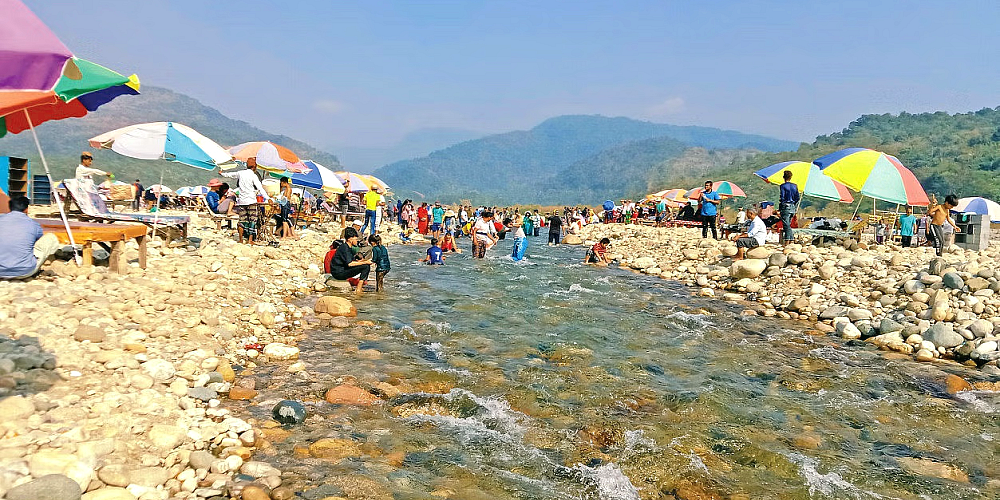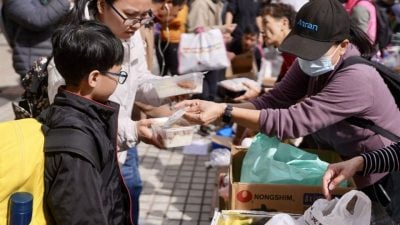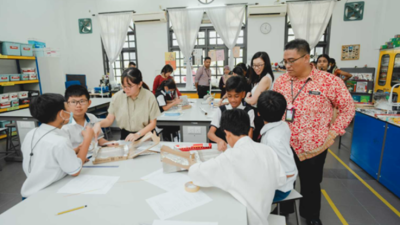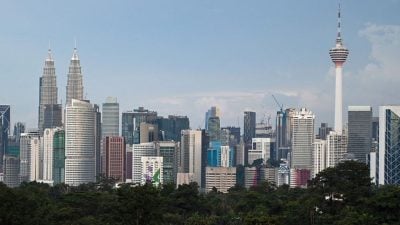Last year, when Sri Lanka plunged into political chaos, fueled by an acute economic crisis and political protests against the Rajapaksa regime, no one thought that the country’s economy would turn around any time soon.
Now, economic data shows that Sri Lanka is making progress and healing from the wounds, albeit slowly.
For instance, inflation has come down to 12 percent in June 2023 from 69.8 percent in September 2022.
While the country’s economy shrunk by 7.8 percent last year and 11.5 percent in the first quarter of 2023, according to the World Bank, Sri Lanka’s central bank estimated that the economy would contract by only two percent this year, and grow by 3.3 percent in 2024.
While prudent macroeconomic policies and effective reforms, among other factors, are said to be behind the improvement, tourism is also playing a vital role.
A revenue increase of 30 percent from tourism this year, coupled with a 76 percent rise in remittances, have contributed $3.2 billion to the country’s coffers, thus positively impacting foreign exchange reserves.
Given that the majority of tourists in Sri Lanka come from India and China, the country is promoting tourism, especially in these two countries, for effective and quick results.
In 2023, Sri Lanka is expecting 1.55 million tourists, with a majority of visitors from India.
Apart from focusing on experiential tourism, the country is also promoting religion-based tourism to welcome Indians.
Strategically, the Sri Lanka Tourism Promotion Bureau is going to invest 1.5 billion Sri Lankan rupees to promote the country in India for 12 months.
The island nation is prioritizing tourism for economic recovery to the extent that President Ranil Wickremesinghe himself suggested creating “borderless tourism” for the BIMSTEC (Bay of Bengal Initiative for Multi-Sectoral Technical and Economic Cooperation) region.
Reading about tourism’s contribution in Sri Lanka’s growth made me wonder about what we are doing to leverage our rich natural and cultural resources to promote tourism in Bangladesh.
Unfortunately, after much digging, I could only find fragmented information on how the government is investing in airport development projects, building three tourism parks (Sabrang Tourism Park, Naf Tourism Park, and Sonadia Eco-Tourism Park), the National Tourism Human Capital Development Strategy for Bangladesh 2021-2030, and expanding the air fleet, among other initiatives.
But what remained unclear to me was the overarching tourism strategy.
What form of tourism are we promoting? Are we even infrastructurally and logistically equipped to promote tourism? Or do we need to focus on capacity-building first?

Tourism’s contribution to our GDP was estimated to be a meager 3.02 percent according to the Tourism Satellite Account 2020 of Bangladesh Bureau of Statistics (BBS), which was prepared using data from FY2018-19.
By contrast, the contribution of travel and tourism in global GDP was estimated to be 10.4 percent in 2019.
While Tk 6,597 crore has been allocated for the civil aviation and tourism ministry in the FY2023-24 budget, the emphasis is misplaced on aviation ambitions.
I am calling it misplaced because before getting more investment, our civil aviation industry needs restructuring to weed out corruption and ensure good governance.
It seems that the sector will devour the majority of the budget allocation and will keep gobbling more and more resources till none is left for its neglected sibling – tourism.
This brings me to my next question: why are civil aviation and tourism merged under the same ministry?
In neighboring India and Sri Lanka, both are under separate ministries, and they have been doing a good job by focusing on specific priorities.
In his speech for the latest budget, the finance minister – while shedding so much light on the exemption of advance tax on aircraft engine, turbo jet and aircraft parts import, and the strides made in expanding the air fleet and airport development projects – had comparatively little to say about a holistic strategy on how the budget will be spent on developing the tourism sector.
While we know of government initiatives to preserve the Cox’s Bazar sea beach and St Martin’s Island, what about the hundreds of other natural tourist spots hidden in the country?
In the National Tourism Policy adopted in 2010, policy-makers emphasized on developing sea beaches and natural tourism, eco-tourism in the Sundarbans and other spots around the country, archaeological and historical tourism, riverine and rural tourism, as well as tourism related to pilgrimage, culture, locality, youth, community, and sports, among others.
Unfortunately, little has been done to develop these forms of tourism 13 years later. Perhaps the problem lies in our inability to pick one or two forms and build on them to yield the desired results.
The government is making good progress in building big infrastructures like airports, bridges and highways, but it has to focus on the smaller aspects of communication like roads, pavements and walkways, too, because these will help ensure a smooth experience for tourists.
Moreover, in terms of nightlife, there is very little our country has to offer – even for locals.
If we want to go out at night, the only options are eateries, shopping malls, other people’s houses or movie theaters at best.
How do we expect tourists to spend their evenings in tourist spots without nightlife facilities or the security to venture out into the dark?
Simply put, there is a visible lack of a proper tourism development strategy in Bangladesh, and we are doing very little to rectify this.
To improve the situation, it might be a good idea to decouple civil aviation from tourism and bring the latter under a separate ministry.
Moreover, the Bangladesh Parjatan Corporation and Bangladesh Tourism Board both need holistic review and restructuring, since their work is not yielding decent results.
We need a shift away from how we currently view tourism. It is not an ornamental wing to brand a country. This sector can be turned into a significant contributor to national economic growth.
It is high time we changed our outlook and unleashed the full potential of tourism.
ADVERTISEMENT
ADVERTISEMENT








































